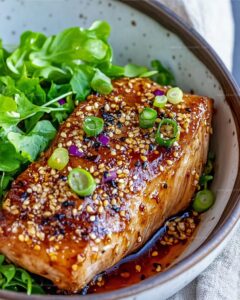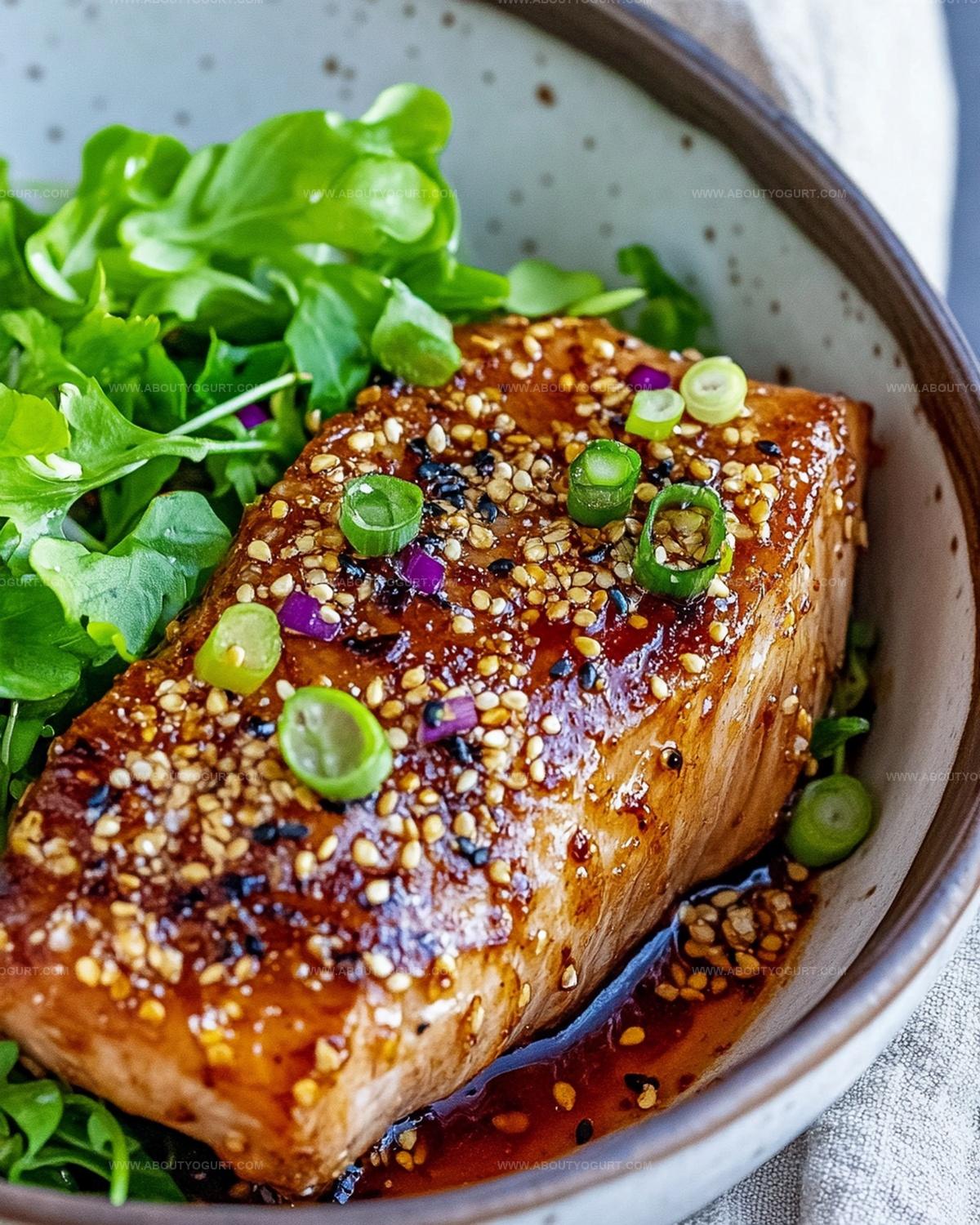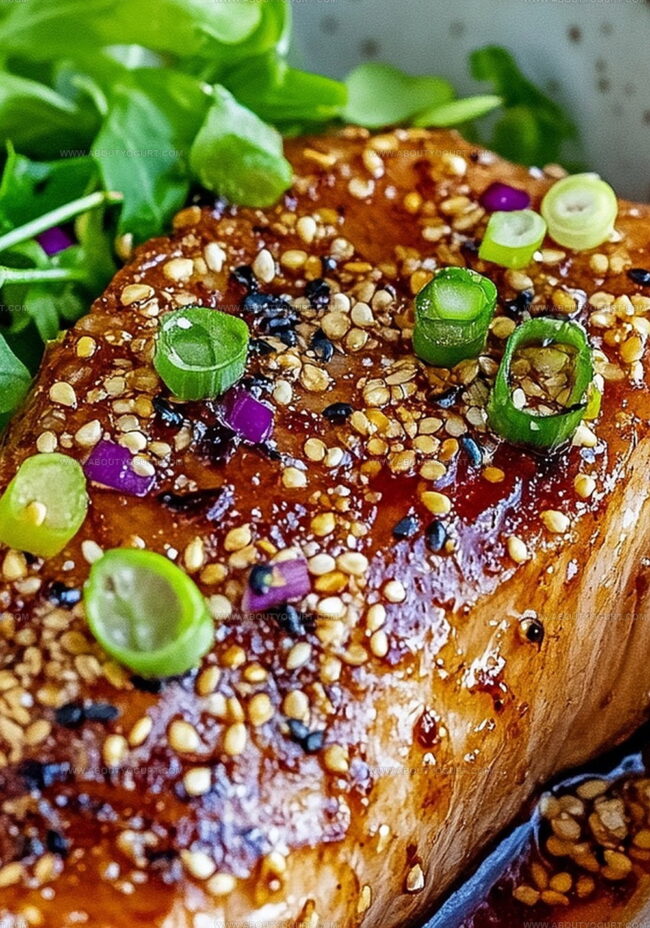Asian Tuna Steak Recipe That’s Easy and Flavorful
Crafting a delectable asian tuna steak sparks culinary excitement in my kitchen.
Vibrant flavors dance through carefully selected ingredients, promising an extraordinary meal.
Pacific ocean catches shine with minimal preparation and maximum taste.
Marinades infuse rich umami notes that complement the fish’s natural texture.
Fresh herbs and zesty seasonings create a transformative dining experience.
My passion for seafood recipes drives me to share this simple yet elegant dish.
You’ll fall in love with how quickly this meal comes together.
What Makes Asian Tuna Steak So Flavorful
What You Need For Asian Tuna Steak Recipe
Main Proteins:Marinade and Seasoning Components:Garnish and Finishing Ingredients:How To Prepare Asian Tuna Steak With Ease
Step 1: Prep the Grill
Fire up your grill to a searing medium-high heat around 350°F. This will create the perfect cooking surface for your tuna steaks.
Step 2: Create Flavor-Packed Marinade
Whisk together in a small bowl:Blend these ingredients until they form a harmonious and aromatic mixture.
Step 3: Marinate the Tuna
Pour half of the marinade over the tuna steaks. Save the remaining sauce for later. Cover and let the tuna soak up the flavors in the refrigerator for at least 20 minutes or overnight for deeper taste.
Step 4: Prepare Tuna for Grilling
Remove tuna steaks from the marinade and discard the excess liquid. Generously coat the steaks with additional sesame seeds, creating a delightful crunchy exterior.
Step 5: Grill to Perfection
Place the sesame-crusted tuna steaks on the hot grill. Cook for 2-3 minutes per side, occasionally drizzling the reserved sauce on top to enhance flavor and moisture.
Step 6: Check Doneness
For medium-rare tuna, aim for an internal temperature of 135°F. If you prefer well-done, the FDA recommends cooking to 145°F.
Step 7: Finish and Serve
Remove tuna steaks from the grill. Top with remaining sauce, sprinkle with chopped green onions and extra sesame seeds. Serve immediately and savor the incredible flavors.
Simple Tips For Great Asian Tuna Steak
Tasty Twists For Asian Tuna Steak Recipes
Perfect Sides For Asian Tuna Steak
How To Store Asian Tuna Steak The Smart Way
Questions Answered About Asian Tuna Steak
The FDA recommends cooking tuna to 145°F, but many chefs and sushi lovers enjoy tuna rare or medium-rare at 135°F. Choose your preferred doneness while being mindful of potential food safety risks.
While this recipe works best with fresh tuna steaks, you can substitute with swordfish, salmon, or halibut. Adjust cooking times based on the thickness of the fish.
Marinate for at least 20 minutes, but no more than overnight. Longer marinating can break down the delicate fish texture and make it mushy.
Print
Asian Tuna Steak Recipe
- Total Time: 26 minutes
- Yield: 2 1x
Description
Sizzling Asian tuna steak brings bold Pacific Rim flavors to your dinner plate. Marinated in zesty soy, ginger, and sesame, these succulent fish fillets promise a quick, elegant meal you’ll crave again and again.
Ingredients
Main Proteins:
- 2 tuna steaks
Seasonings and Spices:
- 1 teaspoon ground ginger
- 1 teaspoon garlic powder
Oils and Liquids:
- 2 tablespoons olive oil
- 1 teaspoon sesame oil
- 1 tablespoon soy sauce
- 1 tablespoon rice vinegar
Garnish and Topping:
- 2 tablespoons sesame seeds
- Green onions (sliced)
Instructions
- Prepare a medium-high temperature grill at 350°F for optimal searing of tuna steaks.
- Create a vibrant marinade by blending olive oil, sesame oil, minced ginger, soy sauce, garlic powder, rice vinegar, and half the sesame seeds in a mixing bowl.
- Generously coat tuna steaks with the prepared marinade, reserving half for later application, and allow to marinate in refrigerator for 20 minutes to 8 hours.
- Remove tuna from marinade, discarding the used liquid, and pat steaks dry with paper towels.
- Encrust the tuna steaks with remaining sesame seeds, pressing gently to ensure seeds adhere completely.
- Position tuna steaks on preheated grill, cooking approximately 2-3 minutes per side while periodically brushing with reserved marinade.
- Monitor internal temperature carefully, targeting 135°F for medium-rare or 145°F for full FDA recommendation.
- Once grilled, transfer tuna to serving platter and drizzle with remaining sauce.
- Garnish with chopped green onions and additional sesame seeds for enhanced visual appeal and flavor complexity.
- Serve immediately to preserve optimal temperature and texture of the tuna steaks.
Notes
- Marinating Magic: Let the tuna soak in the marinade overnight for deeper, more intense Asian-inspired flavors that will make your taste buds dance.
- Temperature Tricks: Use a meat thermometer to ensure perfect doneness, remembering that tuna cooks quickly and can become dry if overcooked.
- Seed Sensation: Press sesame seeds firmly into the tuna’s surface to create a delightful crispy crust that adds texture and nutty flavor.
- Dietary Flexibility: For a gluten-free version, swap regular soy sauce with tamari, and for a low-sodium option, use reduced-sodium soy sauce to control salt intake.
- Prep Time: 10 minutes
- Cook Time: 6 minutes
- Category: Lunch, Dinner
- Method: Grilling
- Cuisine: Asian
Nutrition
- Serving Size: 2
- Calories: 355 kcal
- Sugar: 1 g
- Sodium: 570 mg
- Fat: 25 g
- Saturated Fat: 3.5 g
- Unsaturated Fat: 21 g
- Trans Fat: 0 g
- Carbohydrates: 6 g
- Fiber: 2 g
- Protein: 35 g
- Cholesterol: 45 mg




Michael Thompson
Founder & Recipe Developer
Expertise
Education
Cascade Culinary Institute – Bend, OR
ServSafe Food Handler Certification – Portland, OR
Focus: Certified in core food safety and hygiene principles for both home and professional kitchens, with emphasis on ingredient handling, kitchen cleanliness, and safe preparation methods.
Mike’s kitchen journey began with a single goal: to make everyday meals feel like something worth celebrating.
After earning his Certificate in Culinary Arts from Cascade Culinary Institute, he spent years working with local farmers and small kitchens across Oregon, learning the beauty of seasonal, small-batch cooking.
Mike’s approach is simple, cook with what’s fresh, keep it approachable, and always leave room for a little creativity. When he’s not testing yogurt marinades or designing single-serving meals, you’ll find him hiking trails or hunting down the best berries at local markets.